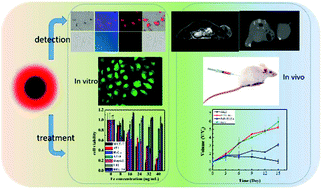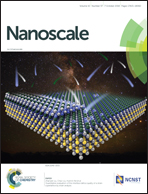Development of a novel FePt-based multifunctional ferroptosis agent for high-efficiency anticancer therapy†
Abstract
Ferroptosis as an emerging mechanism has become a research hotspot for killing cancer cells. In this work, a novel ferroptosis agent, FePt-PTTA-Eu3+-FA (FPEF), was rationally designed by harnessing the luminescent lanthanide complexes PTTA-Eu3+ and folic acid (FA) in FePt nanoparticles. FePt-Based nanomaterials have potential applications in magnetic resonance imaging/computed tomography (MRI/CT) in clinical diagnosis and have excellent capacity to induce cancer cell death. Mechanistic studies of FPEP showed that the FePt induced cancer cell death was affirmed as the ferroptosis mechanism. To the best of our knowledge, it will be the first report that proves the existence of the ferroptosis process in FePt NPs. The in vitro tests of FPEF demonstrated that the as-prepared NPs exhibit a satisfactory anticancer effect towards FA-positive tumor cells including 4T1, MCF-7 and HeLa cells. The in vivo studies using tumor-bearing balb/c mice revealed that the FPEF NPs could significantly inhibit tumor progression. Such all-in-one therapeutic strategies have great potential in early diagnosis, prognosis and treatment of cancer.



 Please wait while we load your content...
Please wait while we load your content...